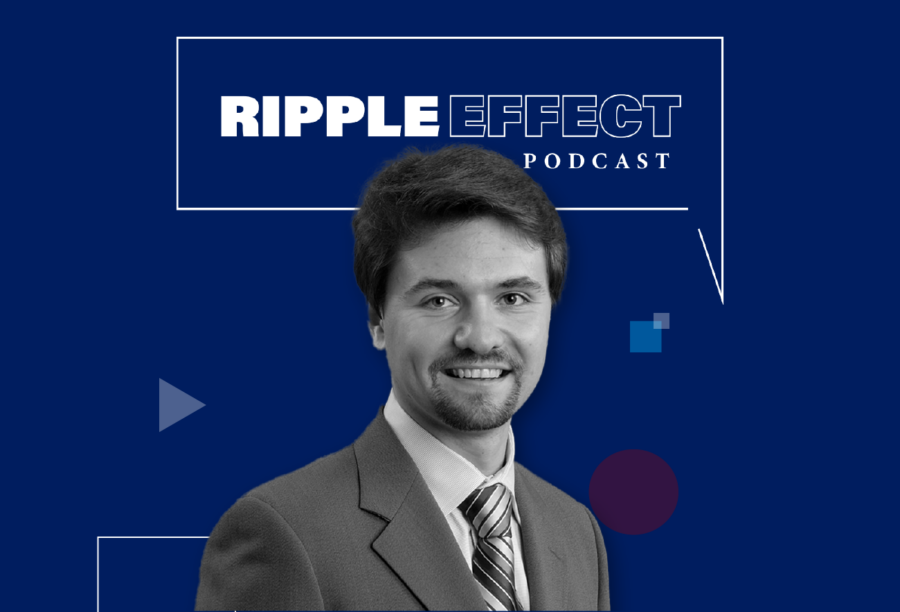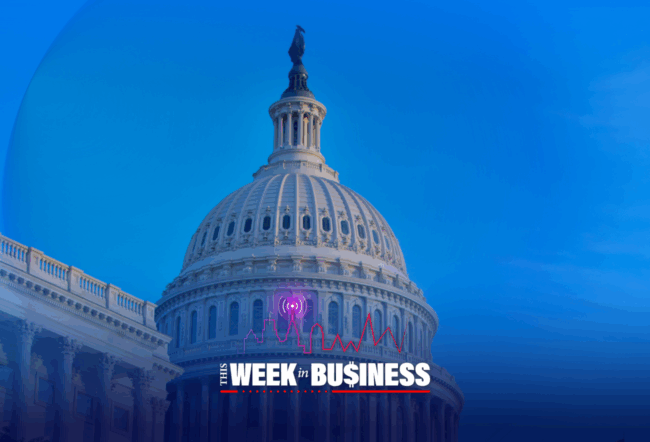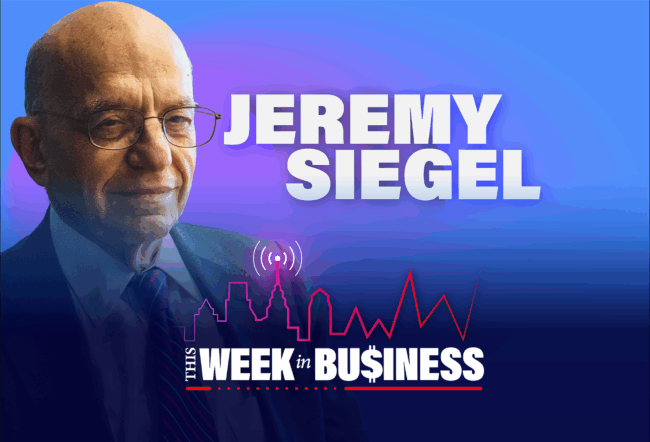Wharton finance professor Nikolai Roussanov weighs in on the possibility of a U.S. recession. This episode is part of a series on “The Economy & You.”
Transcript
What Are the Signs of a Recession According to Experts?
Dan Loney: Recession is a word that’s been in our vocabulary quite a bit in recent months, but whether or not we see it occur is still a big question. Will it be short and somewhat painless? Or will it have a little bit more teeth to it? We don’t really have all the data at this point.
Nikolai Roussanov: If you look at some of the key indicators of recession, like unemployment rate, it’s still near historic lows. It has only ticked up a tiny bit, but it’s still under 4% percent -- the levels that we saw pre-pandemic. Talking about recession when labor force participation is rising seems strange, on the one hand. On the other hand, there is all this talk of a recession. Why? Well, because the Fed is raising rates. And there’s an old adage that says that recessions don’t replace expansions by themselves. Expansions don’t die of old age; the Fed kills them. This is what I think everybody’s anticipating with the big wave of inflation, and the Fed trying to fight it by raising rates. That’s what kills the expansion and brings the recession about.
So far, we have not seen it. The signs of an economic slowdown are really, really tiny compared to the signs of a healthy economy chugging along. Of course, the markets get jitters every time that they think the Fed is going to tighten more than has been previously expected. And yes, there may be some pockets of weakness here and there. Talks of a commercial real estate collapse are quite active. But so far, the key indicators of a recessionary environment that have to do at least with the labor market are not there.
Loney: Historically, there’s usually some sort of shock that sets up the recession, correct?
Roussanov: Yes and no, based on what I just said about the Fed’s role. The Fed can slow an economy down. And typically, something comes along that sort of breaks with that Fed tightening. In 2007, the housing market broke, and then the financial system went down with it and accelerated the collapse. With the most recent recession, the Fed started tightening. But there were no signs of a meaningful recession until, all of a sudden. the pandemic hit. And that had nothing to do with the Fed or the financial markets or anything that U.S. consumers could have done.
Sometimes, it takes an external shock to cause a really major recession. If no such external shock comes, the Fed can slow down the economy to the level that people would call a soft landing. The problem is, it’s very hard to engineer a soft landing. You can bring the plane down, and then something happens in the very last bit, right before you hit the runway, and it’s not so soft anymore. I think that’s what happened in 2008. And of course, you can't blame the Fed for 2020.
But in 2008 and 2001, sort of a soft landing. It was a recession, but it was a fairly short, fairly painless recession after the collapse of the dot-com bubble. Of course, there was another external shock there, 9/11. But that was really a regular recession.
Loney: Is it important to look at each event individually or as a group to understand what’s in play? Are there things that correlate between different recessions?
Roussanov: Financial economists in particular like to look at the shape of the yield curve. We see that when the short-term Treasury yields are above long-term yields, that generally is not a good sign going forward for the economy. In fact, that is probably one indicator that has consistently predicted a recession in the next year to two years. It’s not a particularly precise indicator because the long-term yields incorporate investor’s educations about the future — what’s going to happen to the economy, not just in the next year or two but in the next decade or two decades.
One reason the long-term yields might be lower than the short-term yields today is that investors expect both lower inflation and lower growth than we’ve had in the post-pandemic couple of years. But another reason that’s often brought up is that investors expect the Fed to start cutting rates once a recession is on the horizon or is actually with us. But that’s a little bit self-referential, right? Because if we said that long rates are lower than short rates because investors expect the Fed to cut in response to a recession, that suggests that they know that the recession is coming. So, it’s not a very useful indicator if it relies on people expecting a recession.
Nevertheless, it has been true for the last several decades that whenever the yield curve “inverts” again with short rates higher than long rates, soon something happens. Maybe because the Fed overtightens, or something else that makes a recession transpire.
Is a Recession Actually Coming, and Can We Prevent It?
Loney: But we’ve been in that kind of a cycle now for several months where the short-term bonds have been riding quite a bit higher with yields than the longer-term bonds. Is that the main driver as to why people are continuing to say, “OK, this has got to be coming. This is going to be around the corner?”
Roussanov: I think that is an important driver. Maybe not the only driver, but certainly the fact that the Fed has tightened and might continue tightening, even though they might pause for a little bit. Right now, the consensus is that they will not tighten at the next meeting, but it’s still not off the table that there will be another hike if inflation rears its head again. In fact, as we saw, the latest inflation report (August 2023) came in higher than expected. A lot of it was oil. Some of it was shelter, which is in the core, which is what the Fed watches. It’s possible that inflation has not been conquered yet. If that’s the case, the Fed might tighten again, and that will invert the curve even further, which means people will say, “Well, now they’re about to break it.”
But as you said, we’ve had this talk for several months. It can take a year, or maybe even a year and a half. In the past, we’ve seen these inversions predict a recession a year to two years down the road. So, it’s not a precise science that the second you have an inversion, a recession is going to happen. It’s an indicator that the Fed is tightening sufficiently that investors don’t think such rates are sustainable for a long time.
Loney: There’s speculation that we’ve hit the top end or are very close to the top end on the Fed raising rates at this point. Is that where you think we are right now?
Roussanov: I think so, unless we really see inflation heat up again out of the combination of oil prices going up as they are with the tightening supply constraints, the slowdown in China could further hurt supply chains, and the whole supply chain worries might resurface, sort of a cost channel. So, it is possible. It doesn't seem likely to me. I think the likeliest outcome is that 6% may be the top for the Fed, or thereabouts. And whether that happens in a November meeting or later on, that’s probably the likeliest outcome. But you never know.
Loney: Let’s go back to 2007. What policy changes or other actions could have been done differently to prevent what happened?
Roussanov: It’s hard to tell. There is a lot of debate about what happened in 2007–2008, let alone what should have been done and what could have been done to prevent it. The housing buildup happened over several years prior to the recession. We saw massive expansion of household balance sheets, mostly because of borrowing via mortgages. Cash out refinancing was at historically high levels. Lots of fragility was also built into the financial system. I’m not going to go through the whole list of things that we have debated, but it’s not something that could have been solved easily and quickly. I think (former Fed Chair Ben) Bernanke should be given credit for trying to do the best he could to contain the crisis. Maybe some of the signs of the financial crisis could have been spotted sooner and some of the fragility in the financial system could have been identified. But it’s always easy to say that in hindsight.
Speaking of mortgages and mortgage refinancing and cash out -- one of the topics that I love to research -- the second-highest peak of mortgage cash out refinancing happened just a few quarters ago. We’ve had house prices again at historic highs, and households are taking advantage of that even with mortgage rates rising. In fact, the only people refinancing mortgages in the last few months, given that the rates skyrocketed, are people who are taking out a lot of cash out of their homes. The question is, what is that going to do to balance sheets of these households when the tightening finally breaks the housing market and we haven’t seen a big pullback in house prices. There may be some regional pullbacks, but not at a national level. What happens then?
Loney: Do these man-made circumstances leading up to a recession spur more regulation to try to prevent what occurred from happening again?
Roussanov: Absolutely. But I feel like what we see every time is that the generals always fight the past war. The regulators always fight the past crisis. The stress tests that the Fed used to test banks’ ability to withstand a crisis did not consider the possibility of a rate hike. They only considered the possibility of recession and a rate cut. All of this stuff that we saw in the spring with Silicon Valley Bank and First Republic, the regional bank crisis, could have been perhaps avoided. SVB was not subject to a stress test. It was too small. But if the regulatory apparatus paid attention to the fact that if rates go up, which they will have to if we see inflation, a lot of these banks that have loaded up on long maturity treasuries will be in trouble, as they have been.
There’s always a past lesson to be learned. But whenever you learn the past lesson, you often forget the lessons that came before that, and you have to take a broader view of what kind of things could happen. There will never be a repeat of what we saw in the past. It will be something different.
What’s in Store for the U.S. Economy?
Loney: Would it be unfair of me to ask you to get out your crystal ball and look at what you think will play out over the next six to 12 months?
Roussanov: I can only speculate. It would be unfair to go anywhere further than that. But I think the commercial real estate sector, which I am not an expert on, is in a bit of trouble. When that starts hitting the lenders’ balance sheets, we might see issues there. It’s going to be potentially on top of what we’ve seen so far with this Treasury maturity mismatch, liability mismatch with assets. But there could be other things.
Certainly, geopolitical issues don’t go away. The war in Ukraine is going on, and OPEC is restricting oil supplies so that oil prices are continuing to climb. U.S. shale is not able to respond like it did in the past, either due to ESG capital tightening, or just the fact that the labor market is super tight, so it’s hard to get workers. I don’t know which one is the dominant constraint, but so far, we have not seen an expansion in oil drilling in the shale patch nearly as much as I would have expected given where prices are going to go, and where they went at the start of the war. They came down quickly, but now we’re at the point where the strategic petroleum reserve is at a record low. It’s small, relative to what’s the amount of oil that the U.S. economy needs anyway. But we don’t see a massive increase in U.S. drilling, which I would have expected as a response to the oil price rises.
The fact that oil prices are rising may not necessarily spill into high inflation as some people think it might, but it’s not good for the U.S. economy when it’s restricted on the supply side. High oil prices are good for Texas when Texas can drill. But when it doesn't have the capital to do so or the workers to do so, it’s not good news for anyone.
Loney: We go through recessions every X number of years, and the dynamics in many cases are different. From that perspective, the learning part of it is exceptionally important.
Roussanov: Absolutely. Certainly, the fragility of the financial system is now a lot more at the forefront of monetary policymakers than it was before the financial crisis. And rightly so, perhaps. Again, we don’t know what exactly is going to break. But it’s quite possible that something different will break in the financial markets this time, compared to what happened in the past. So certainly, we should learn the lessons from the past. But we shouldn’t forget that there’s lots of lessons that we’ve had, historically. We should take the broad view, and also consider things that perhaps are outside of that historical experience as well.



